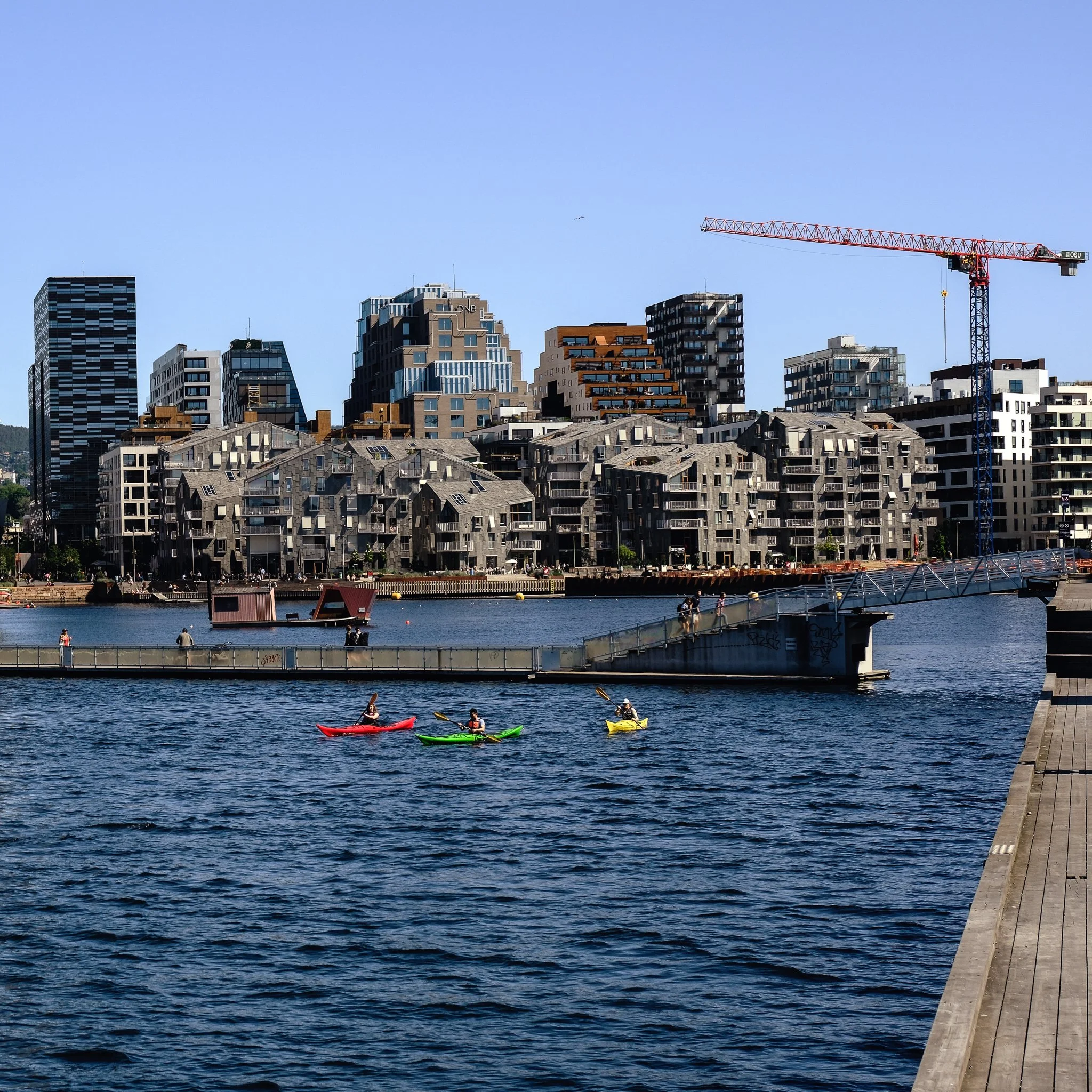gamle oslo
Oslo, Norway
Kayakers paddle in front of new waterfront residences at Bjørvika. A pontoon gangway and bridge connect across the water from the Opera House and the new Munch Museum to Sørenga. Bispen, a floating sauna, is anchored in the bay. The modern, angular waterfront residences appear to belie the district's name, Gamle Oslo, "Old Oslo". Even when the city was renamed Christiania - from the 17th and through the early 19th century - this area maintained the name Oslo.
Gamle Oslo is the site of continuing change. The former container dock area is a waterfront destination and site of Barcode, a series of narrow high-rise buildings home to business offices, retail, dining, residential apartments, and a daycare. The swiftness of change in this area is captured in its denotation as an "instant city".
Gamle Oslo
Bordered by Sentrum and Nordstrand, Gamle Oslo includes several islands in the Oslo harbour.
The district's name, Gamle Oslo, "Old Oslo," calls attention to the area's connection to the oldest traces and medieval sites of Oslo. It is both the site of the city's origins and some of the most recent transformations. In Gamle Oslo, a row of high-rise buildings open to the fjord stands in high relief to the city's ancient ruins. The connections to Oslo's historical culture can also be traced to and experienced at the monastery ruins on Hovedøya, the island closest to the city centre.
Formerly occupied by industrial docks, the waterfront has transformed remarkably into vibrant neighbourhoods incorporating residential complexes along the water's edge. The Fjordbyen "Fjord City" urban renewal project championed sustainable development and enhanced quality of life and health to enlarge the common urban spaces along the fjord that everyone can use.
Oslo Municipality used strategic governance, zoning and land-use changes, and large-scale planning to ensure overarching design goals. An expansive green park, interwoven with numerous channels, extends through this neighbourhood. A large fjord pool encourages residents and visitors to embrace the waterfront lifestyle. Oslo's new harbour promenade integrates green parks, interwoven with numerous channels and bathing areas along with cafés, restaurants and great outdoor spaces on the waterfront.
The district incorporates the Grønland area, known for a diversity of vegetable stalls and grocers selling spices, as well as pubs and restaurants with a variety of ethnic foods. In 2020, the Munch Museum relocated to the area in an exciting hallmark architectural structure rising nearly 60 meters (196. Feet) at the waterfront's edge. The venue is a vibrant cultural institution, an archive for the work of Edvard Munch and creates a new vantage for spectacular views of the waterfront, city, and surroundings.
































































